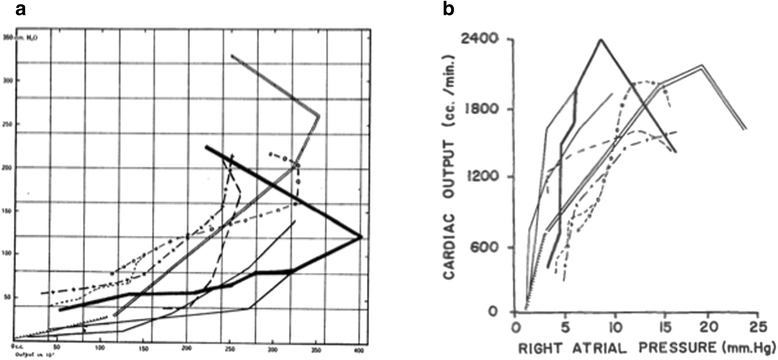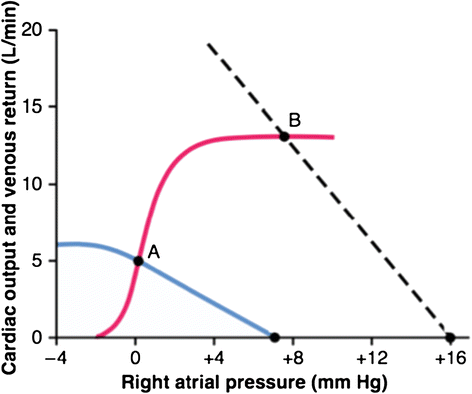Starling curves and central venous pressure
- PMID: 25880040
- PMCID: PMC4329649
- DOI: 10.1186/s13054-015-0776-1
Starling curves and central venous pressure
Abstract
Recent studies challenge the utility of central venous pressure monitoring as a surrogate for cardiac preload. Starting with Starling's original studies on the regulation of cardiac output, this review traces the history of the experiments that elucidated the role of central venous pressure in circulatory physiology. Central venous pressure is an important physiologic parameter, but it is not an independent variable that determines cardiac output.
Figures






References
Publication types
MeSH terms
LinkOut - more resources
Full Text Sources
Other Literature Sources

